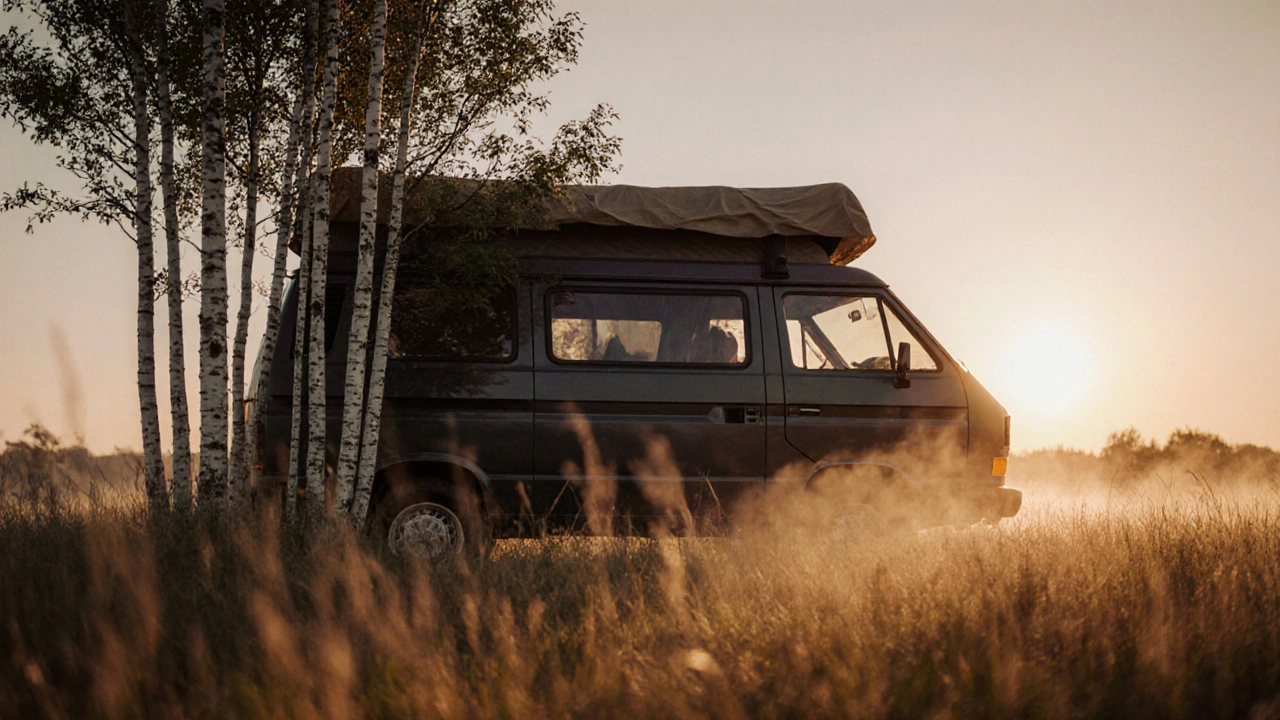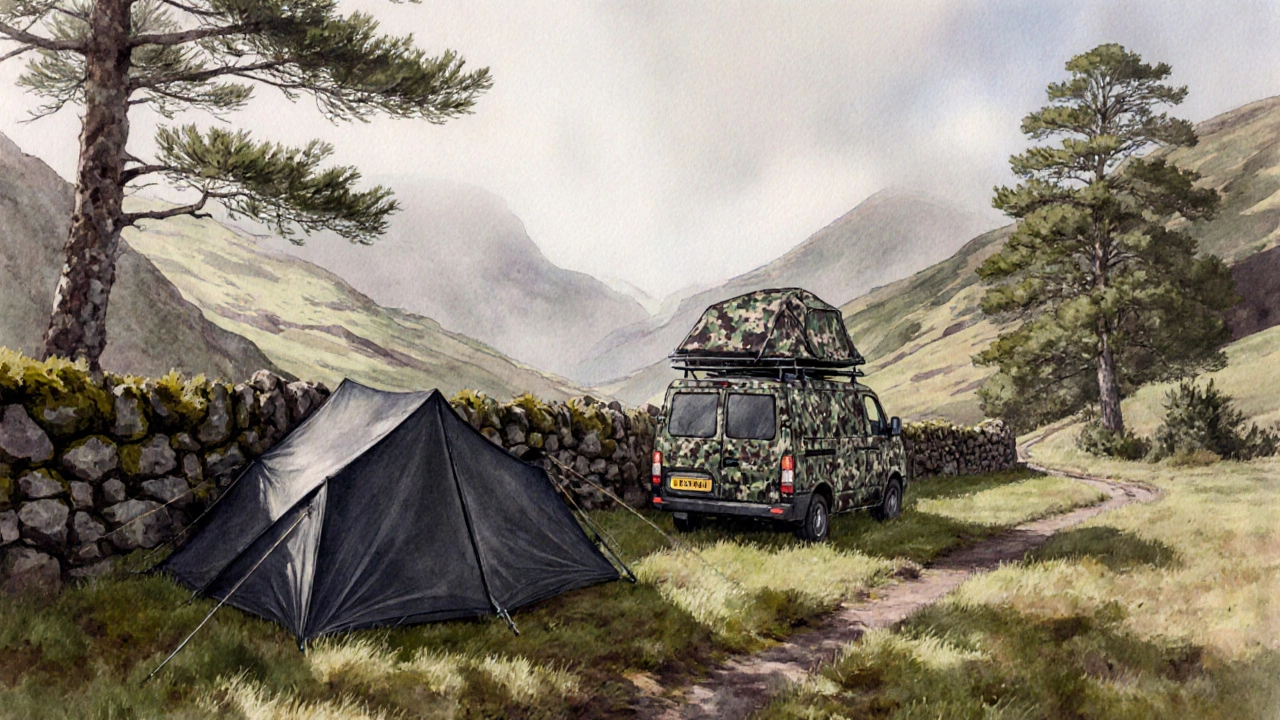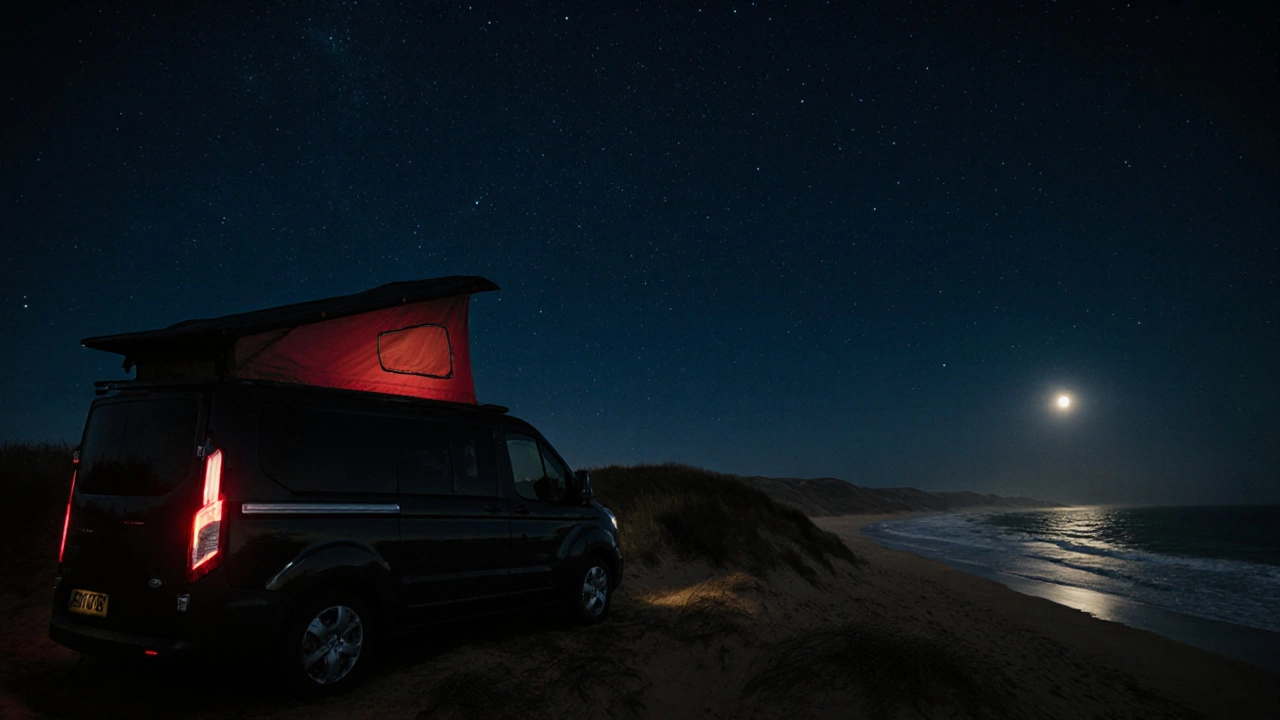What is Stealth Camping in the UK? A Complete Guide
 Oct, 18 2025
Oct, 18 2025
UK Stealth Camping Legality Checker
Check Your Legal Risk
Select your location to see if stealth camping is legally safe based on UK regulations.
Ever wondered if you could park your van in a meadow, set up a tent by the coast and leave no trace? That’s the essence of stealth camping UK. It’s a practice that blends the freedom of wild camping with a low‑profile approach to avoid attention from landowners, law‑enforcement, or fellow hikers. Below you’ll find everything you need to decide whether it’s right for you, how to stay within the law, and the best spots to try it.
What is Stealth Camping?
Stealth camping is the act of setting up a temporary campsite in a location that isn’t designated for camping, while deliberately keeping a low visual and acoustic profile. Unlike traditional wild camping-where you might openly camp in a national park-stealth campers choose secluded spots, use camouflage, and often arrive late or leave early to avoid detection.
Legal Landscape in the England, Scotland, Wales and Northern Ireland
The UK doesn’t have a single law covering stealth camping; the rules differ across the four nations.
- England and Wales: The Countryside and Rights of Way Act 2000 (CRoW) gives the public the right to walk on open countryside, but it does not grant a right to camp. Local bylaws, especially in popular tourist areas, can prohibit overnight stays.
- Scotland: The Scottish Outdoor Access Code, backed by the Land Reform (Scotland) Act 2003, allows responsible wild camping on most unenclosed land. However, the code stresses respect for landowners, which means stealth tactics are still useful in heavily trafficked spots.
- Northern Ireland: There is no specific legislation granting a right to camp on unenclosed land. Most land is privately owned, so you’ll need explicit permission or rely on discretion.
In practice, the key is to avoid causing damage, keep noise to a minimum, and leave no evidence. If you’re ever asked to move, comply promptly to reduce the risk of a formal complaint.
Where Can You Practise Stealth Camping in the UK?
Choosing a spot is a mix of research, local knowledge, and a bit of trial‑and‑error. Below are five regions where stealth camping tends to work well, plus tips on how to spot a good site.
- Scottish Highlands: Vast moorlands and sparsely populated forests offer plenty of cover. Look for secluded glens off minor roads.
- Yorkshire Dales: Small field edges and de‑footed lanes near the Pennines can host a discreet tarp or pop‑up tent.
- Cornwall’s coastal paths: The coastline is dotted with hidden coves. Arrive after sunset and set up on a high dune where the tide won’t reach.
- Lake District: Remote valleys away from the main tourist routes provide cover. Early autumn offers fewer walkers.
- South Wales valleys: Abandoned quarry sites or old industrial lanes can serve as low‑profile spots.
General tips for spotting a good stealth site:
- Look for natural barriers-trees, hedges, or elevation changes-that hide your silhouette.
- Avoid obvious flat clearings that attract attention.
- Check the ground for drainage; you don’t want a flood after a night of rain.
- Consider proximity to public footpaths. A short distance away reduces the chance a passerby will spot you.

How to Stay Stealthy: Practical Tips
Even the most secluded spot can become obvious if you’re not careful. Follow these habits to keep a low profile.
- Arrive Late, Leave Early: Aim to set up after dark and break down before sunrise. This limits the window for anyone to see you.
- Use Low‑Profile Gear: A one‑person tent with a dark canopy, a small rooftop tent, or a compact bivvy works best. Avoid bright colors.
- Camouflage Your Vehicle: If you’re in a campervan, park behind trees or in a dip. Use a breathable tarp that blends with the surroundings.
- Minimise Light and Noise: Dim any internal lights, use a headlamp with a red filter, and keep conversations low. Electrical devices should stay off the exterior.
- Leave No Trace: Pack out all trash, bury human waste at least 30 cm deep, and avoid digging fire pits. Simple biodegradable soap for cleaning.
- Know the Exit Plan: Have an alternative spot mapped in case the local landowner or rangers ask you to move.
Gear Recommendations for Stealth Camping
Choosing the right gear can make the difference between a comfortable night and a stressful scramble.
- Quiet Roof‑Top Tent: Look for models with a low silhouette and dark fabric, such as the Roofnest Sparrow (fits most standard vans).
- Compact Sleeping Bag: A down‑filled, 3‑season bag with a temperature rating of -5 °C works for most UK nights.
- Portable Solar Charger: Keeps your phone and lights alive without a noisy generator.
- Light‑Weight Cookware: A single‑pot system and a small alcohol stove minimize scent and visual clutter.
- Stealth‑Tarp: A tarpaulin that can be set up as a ground cover or a makeshift shelter; choose a neutral earth tone.
Risks and How to Mitigate Them
Stealth camping is rewarding, but it comes with challenges.
- Legal Issues: If you’re asked to leave, comply. Keep a copy of local bylaws on your phone to understand your rights.
- Weather: UK weather can change quickly. Carry a waterproof bivvy and always check forecasts before you head out.
- Wildlife: In remote areas, you may encounter badgers, foxes, or birds of prey. Store food securely in airtight containers and keep the campsite clean.
- Safety: Let someone know your intended route and expected return time. Use a personal locator beacon (PLB) if you’re venturing into very remote terrain.

Pre‑Trip Checklist
Before you head out, run through this quick list to ensure you’re fully prepared.
- Research the specific area’s local bylaws and landowner policies.
- Map the exact spot using GPS coordinates; save it offline.
- Pack all gear in a low‑profile, waterproof bag.
- Charge all electronic devices and test your solar charger.
- Check the weather forecast for the next 48 hours.
- Notify a friend or family member of your itinerary.
Stealth Camping vs. Legal Wild Camping vs. Illegal Camping
| Aspect | Stealth Camping | Legal Wild Camping | Illegal Camping |
|---|---|---|---|
| Typical Locations | Secluded spots off minor roads, hidden coves | Designated wild‑camping areas (e.g., Scottish Highlands, Dartmoor permitted sites) | Public parks, beachfronts with clear signage prohibiting overnight stays |
| Legal Standing | Gray area - relies on discretion and “no‑notice” principle | Explicitly allowed by law or landowner permission | Clear violation of local bylaws; risk of fines or removal |
| Risk Level | Medium - risk of being asked to leave, possible fine if reported | Low - generally safe when staying within guidelines | High - frequent enforcement, possible police involvement |
| Best For | Experienced campers seeking freedom in high‑traffic regions | Beginners or those who want peace of mind | Those willing to ignore regulations entirely |
Frequently Asked Questions
Is stealth camping legal in England?
There is no specific law that permits it, but it isn’t illegal per se as long as you don’t cause damage, stay hidden, and leave when asked. Many local councils have bylaws that can prohibit overnight stays, so always check the area’s regulations first.
Can I stealth camp in Scotland without permission?
Scotland’s Outdoor Access Code allows wild camping on most unenclosed land, but the code stresses respect. Stealth techniques help you stay unobtrusive in popular spots where landowners might be sensitive.
What’s the best time of year for stealth camping?
Late spring to early autumn offers milder weather and longer daylight, but shoulder seasons (late September to early November) give fewer walkers, making it easier to stay hidden.
Do I need a fire permit for a stealth campfire?
In most UK regions open fires are restricted, especially in moorland and forest zones. Use a portable alcohol stove instead of a traditional fire to avoid fire bans and reduce scent.
How can I avoid being reported by other hikers?
Set up beyond the line of sight, keep noise low, and pack out all waste. If you’re near a footpath, choose a spot that’s at least 50 m away and that blends into the natural landscape.